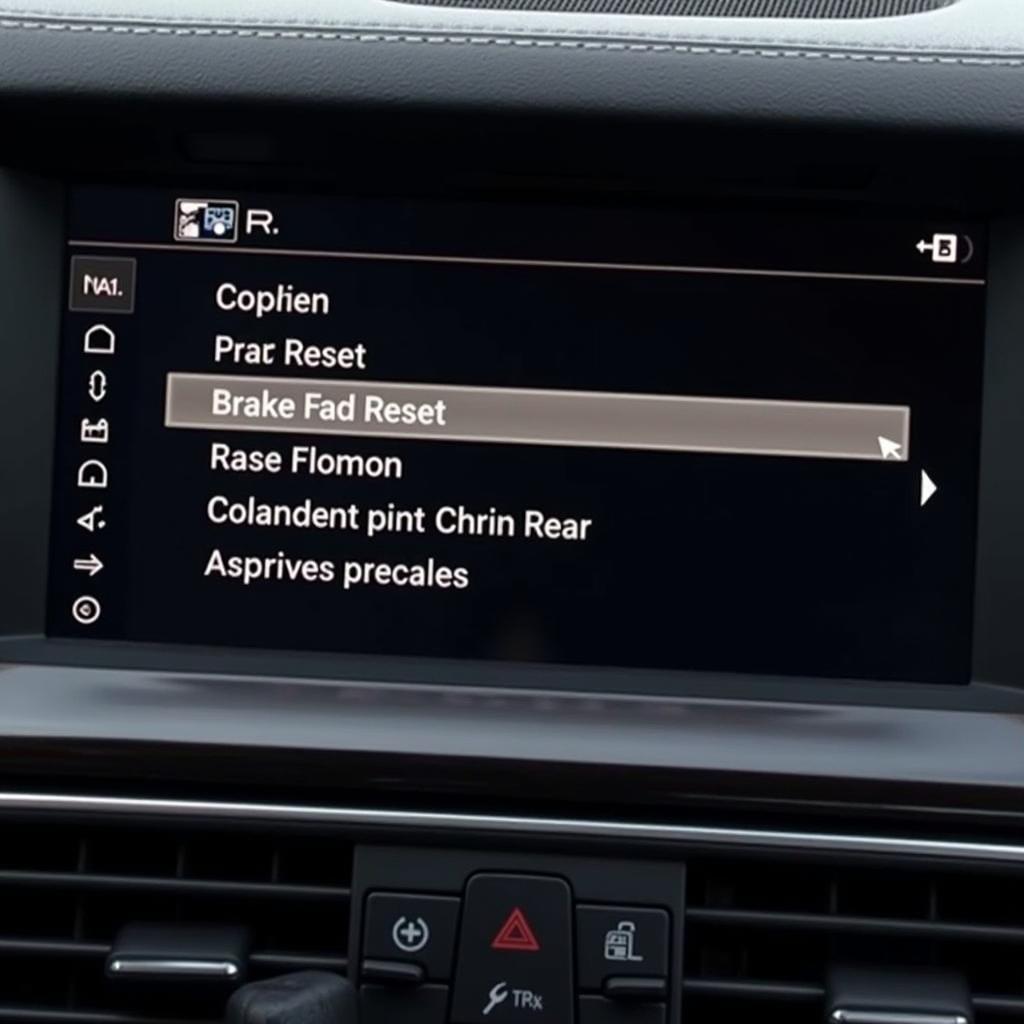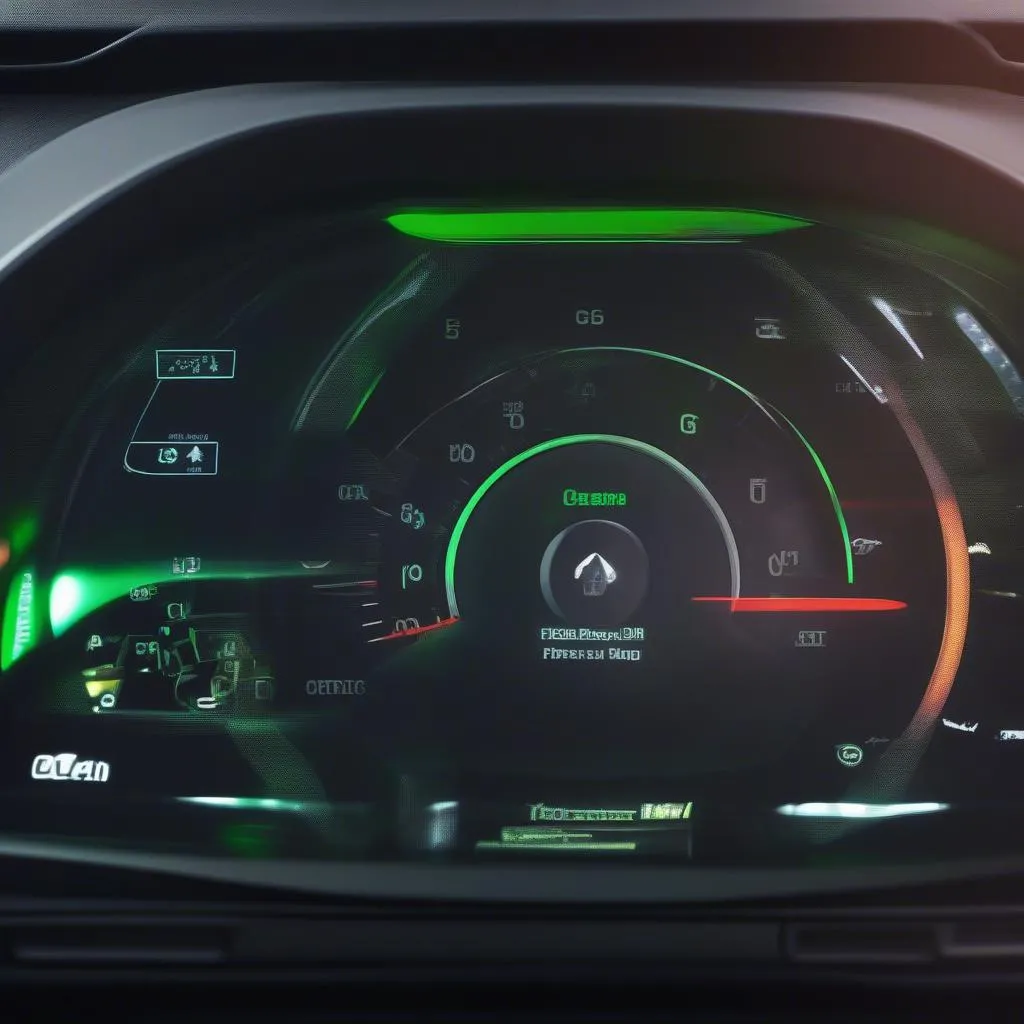Resetting the brake pad warning light on your BMW 5 Series is a relatively simple procedure, often achievable without specialized tools. This article provides a comprehensive guide to help you understand and resolve this common issue, covering various model years and potential complexities.
Similar to how you might reset a bmw brake fluid warning light reset, resetting the brake pad warning often involves a specific sequence of actions. Understanding when this warning light illuminates is crucial. Typically, it signifies worn brake pads nearing the end of their lifespan, ensuring your safety on the road. However, sometimes the light can trigger prematurely due to sensor malfunctions or after routine brake maintenance. In such cases, resetting the warning light becomes necessary.
Understanding the BMW 5 Series Brake Pad Warning System
The brake pad warning system in your BMW 5 Series relies on sensors embedded within the brake pads. These sensors monitor the thickness of the brake pad material. When the pad material wears down to a predetermined level, the sensor triggers the warning light on your dashboard. This system is designed to give you ample time to replace your brake pads before they become dangerously thin.
Why Reset the Brake Pad Warning Light?
Resetting the light is essential after replacing your brake pads. Failure to do so will leave the warning light illuminated, even with new pads installed. This can be distracting and may prevent you from noticing other potential warning lights in the future. Additionally, a persistent warning light could indicate an unresolved issue with the brake system.
How to Reset the Brake Pad Warning Light on a BMW 5 Series
The process for resetting the brake pad warning light can vary slightly depending on the model year and specific options equipped on your BMW 5 Series. Here are the general steps:
- Ensure New Brake Pads are Installed: Before attempting to reset the warning light, confirm that new brake pads have been correctly installed.
- Turn the Ignition to Position II: Insert your key and turn it to the second position, activating the vehicle’s electrical systems without starting the engine.
- Access the Service Menu: Navigate through the iDrive system to the vehicle information or service menu. The exact location may differ depending on the iDrive version.
- Select Brake Pad Reset: Locate the option to reset the brake pad warning. This might be labelled as “Brake Service” or similar.
- Follow the On-Screen Prompts: The system will guide you through the reset procedure, which typically involves confirming the reset and selecting the axle (front or rear) where the pads were replaced.
- Verify Reset: After completing the steps, turn off the ignition, wait a few moments, and then restart the car. The brake pad warning light should now be extinguished.
 BMW 5 Series iDrive Brake Reset Menu
BMW 5 Series iDrive Brake Reset Menu
Alternative Reset Methods for Older BMW 5 Series Models
For older BMW 5 Series models without iDrive, the reset procedure might involve a combination of button presses on the instrument cluster or using a specialized diagnostic tool.
Using a Diagnostic Tool
If the manual reset methods fail, or if you’re uncomfortable working with the car’s electrical system, consider taking your vehicle to a qualified technician. They can use a diagnostic tool to reset the warning light efficiently. Much like resetting a bmw k1200 brake failure warning light, a diagnostic tool can provide a more precise and targeted solution.
Troubleshooting Common Issues
Sometimes, the brake pad warning light might persist even after resetting. This could be due to a faulty sensor, wiring issues, or problems with the brake pad installation itself. In such cases, further diagnosis and repair are necessary. For information on other BMW models, you might find this guide on how to reset brake warning light on bmw 1 series helpful. Similar to reset bmw brake pad warning light, understanding the underlying cause is key. Also check out this resource on bmw 5 series brake pad warning light reset.
Expert Insight: “A persistent brake warning light should never be ignored,” says John Smith, Automotive Electrical Systems Engineer. “While a simple reset might resolve the issue, it’s crucial to ensure the underlying brake system is functioning correctly.”
Conclusion
Resetting the brake pad warning light on your BMW 5 Series is a straightforward process in most cases. However, understanding the system and following the correct procedure is essential. If you encounter any difficulties, consulting a qualified technician is always recommended. Addressing this warning promptly ensures your safety and prevents potential brake system issues. Don’t delay in addressing this crucial safety feature.
FAQ
- Why is my brake pad warning light still on after replacing the pads? This could be due to a faulty sensor, incorrect installation, or a failure to reset the warning light.
- Can I drive with the brake pad warning light on? It’s not advisable. While you might still have some braking capability, driving with worn pads can be dangerous.
- How often should I replace my brake pads? Brake pad lifespan varies depending on driving habits and conditions. Consult your owner’s manual or a qualified technician for recommendations.
- What tools do I need to reset the brake pad warning light? For most newer models, no tools are required. Older models might require access to a diagnostic tool.
- Do I need to reset the warning light for both front and rear brakes? Only reset the warning light for the axle where the brake pads were replaced.
- Is resetting the warning light the same as replacing the brake pads? No. Resetting the light is a separate procedure performed after replacing the brake pads.
- What should I do if I can’t reset the warning light myself? Consult a qualified technician for assistance. They can diagnose and resolve any underlying issues.

